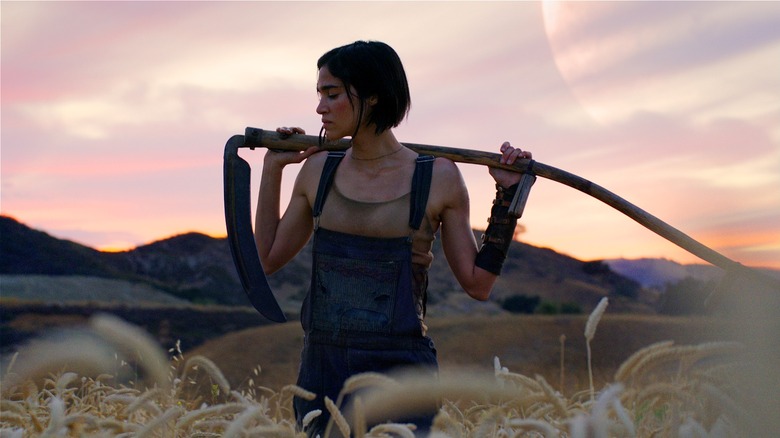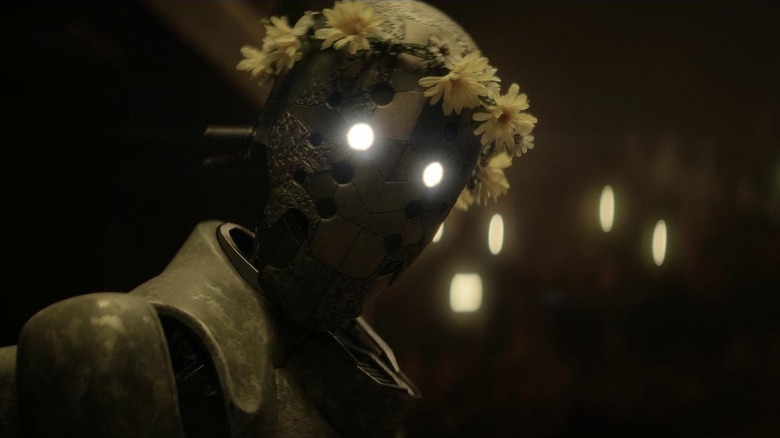5 Worst Two-Part Movies Of All Time
Hollywood has always loved sequels, as seen by the early days of countless movies starring Tarzan, the Universal Monsters, and other beloved characters. This fondness has been exacerbated in the modern world as studio executives find new ways to milk every possible dollar out of a recognizable brand name. Thus, instead of just making sequels or adapting a new series of books, Hollywood has become enamored with splitting single stories into two movies. "Harry Potter and the Deathly Hallows" and the "Wicked" features are the most famous examples of this recent cinema obsession.
The 10 best movies split into two parts show that this exercise can be creatively fruitful in addition to further bolstering the bank accounts of film executives. However, that doesn't mean every single duology operating from these narrative ambitions is created equal. Just as there are movie sequels so bad that they ended a franchise, so too are there the subpar two-part movie sagas that demonstrate the perils of stretching a single story beyond its breaking point. Five of these woe begotten two-part films are especially great examples of why going this cinematic route can be a fool's errand.
The flaws foiling these features are countless, and range from poor screenwriting to tonal problems to even failing to deliver a proper concluding second installment. Sequels and two-part sagas aren't inherently bad, but you sure wouldn't know that just by looking at these movies and their towering creative deficiencies.
Fast X and Fast 11
Every road has an ending, and for the "Fast & Furious" saga, the hope was that "Fast X" and its sequel could provide a satisfying capper to this automobile-centric franchise. From the get-go, this production was envisioned as a two-part enterprise, thus ensuring all of the storytelling beats Vin Diesel and company wanted to explore would make it to the silver screen. Originally, these ambitions involved "Fast X" hitting theaters in May 2023 before an untitled eleventh installment would zoom into multiplexes in April of 2025.
"Fast X" was clearly designed as one-half of a larger film, as seen by its ending hinging on two massive cliffhangers (one of which involves Dominic Toretto and his son being trapped in front of a dam that's about to burst) before a mid-credits scene drops yet another bombshell by revealing that Dwayne Johnson's Luke Hobbs was finally coming back to the mainline "Fast & Furious" stories. However, a motion picture paying off those plot threads has yet to materialize. "Fast X"'s follow-up is stuck in limbo due to disagreements between Universal Pictures and Diesel over the film's budget. With these films no longer making over $1 billion worldwide, another film as costly as "Fast X"'s $360 million price tag is out of the question.
"Fast X" was already underwhelming. The lack of a proper second half in its two-part saga, though, really seals the deal that this has been one massive cinematic boondoggle.
The Twilight Saga: Breaking Dawn
There was no need for Stephanie Meyer's "Breaking Dawn" book to be split up into two motion pictures. The interminable "Twilight Saga: Breaking Dawn – Part 1" made that abundantly clear with its dismally-paced script that dragged out Edward and Bella's wedding eternally. This first half of the "Breaking Dawn" duology is easily the worst of the "Twilight" films for many reasons, including its enraging choice to relegate Bella to being sick on a couch for so much of its runtime. The heavy emphasis on dry wedding planning and rituals, though, also zaps the franchise of any fun melodrama or fantasy shenanigans. People come here for scenes like the "Twilight" vampire baseball game, not making sure the guest list for a wedding is perfect.
In contrast, "Breaking Dawn – Part 2" has a lot more fun to its name, especially when Bella tries out her vampire powers for the first time. The finale's fake-out, grisly showdown between good and evil is also a riot. However, "Part 2"'s charms can't erase the severe shortcomings of its direct predecessor. Taken as one big, lengthy film, "Breaking Dawn" feels like the very definition of padded. There aren't even interesting tonal or atmospheric variations between "Part 1" and "2" to give them distinctive artistic personalities.
Instead, this excessive finale just feels like one more way to wring a few extra dollars out of the "Twilight" name. Bella deserved better. Her hideous CG baby, less so.
It and It: Chapter Two
What is Pennywise? Stephen King's "It" villain is a complicated and mystical entity that's far more than just a nasty clown. Given the sheer length of the "It" novel, it made sense that it would spawn a two-part film adaptation. In an ideal world, this would've resulted in moviegoers being pelted with the scariest Pennywise moments possible nonstop for four-ish hours of cinema. Instead, the "It" duology spanned a fine (but not especially standout) inaugural installment and a sequel so terrible that it diluted the entire franchise's track record. "It: Chapter Two" didn't just fumble the ball in the second half — it totally deflated it.
This second "It" feature had a strangely erratic tone that felt like sloppy screenwriting rather than capturing the atmospheric intricacies of an uncontrollable nightmare. Talented actors like Jessica Chastain and James McAvoy didn't have much to do with their respective characters, and there wasn't nearly enough depth or scares to justify the 169-minute runtime. Plus, "It: Chapter Two" constantly returning to the first film's kid characters (now realized with crummy digital de-aging effects) robbed this second installment of a distinctive identity. Rather than one film being about childhood and the other concerning adulthood, "It: Chapter Two" smushed them together to dismal results.
Making "It" into a two-part movie makes sense. However, the execution of these "It" films, especially when it came to "It: Chapter Two," left so much to be desired.
Rebel Moon: A Child of Fire and The Scargiver
Director Zack Snyder's never been one to do things "small." Unsurprisingly, this extended to his sci-fi film "Rebel Moon," which gradually evolved into a two-part epic financed and released by Netflix. The first entry, "A Child of Fire," launched on the streaming site in December 2023; while the follow-up, "The Scargiver," debuted four months later in April 2024. The two features tell the expansive saga of Kora (Sofia Boutella) and her ragtag group of cosmic warriors who unite to defeat a larger evil led by Atticus Noble (Ed Skrein).
The initial "Rebel Moon" movie garnered dismal reviews, with critics bemoaning the lack of compelling storytelling and the inert characters. None of this material was remotely exciting enough to get folks stoked for another installment. "The Scargiver" received even worse reviews, with many questioning why this second installment was so devoid of any momentous story beats or character growth. This shortcoming made the decision to divide "Rebel Moon" into two movies extra perplexing and insulting. There wasn't enough sci-fi thrills here to sustain one motion picture, let alone a pair of lengthy films.
Snyder initially envisioned "Rebel Moon" as blossoming far beyond the initial two-part kick-off entry. He saw it as a saga that could span four or six movies, which have yet to materialize. Considering how padded "Rebel Moon" felt over these first two movies, it's doubtful anyone's clamoring for even more two-part sagas in this universe.
The Divergent Series: Allegiant and Ascendant
The "Divergent" movie franchise had so much potential. Launched into theaters in March 2014, the first "Divergent" was a box office hit that ensured author Veronica Roth's entire trilogy would come to the silver screen. Taking a cue from the other hot young adult book adaptations of that era, it was decided that the final book, "Allegiant," would be split into two movies. "The Divergent Series: Allegiant" hit theaters on March 18, 2016, while plans were underway for "The Divergent Series: Ascendant" to conclude everything in June 2017.
While the "Mockingjay," "Deathly Hallows," and "Breaking Dawn" movies were all shot back-to-back, the two "Allegiant" films were shot separately. "Ascendant" didn't start shooting before "Allegiant" debuted, which meant its existence was put into jeopardy given the latter film's box office performance. That was the primary reason why the "Divergent" film series fell apart, with those tepid numbers ensuring that Summit Entertainment wasn't keen on producing a proper conclusion to the saga. "Allegiant" has unfortunately taken the crown as one of the most baffling and unsatisfying two-part sagas in history.
Not only is the first film tedious, but there isn't even a sequel to resolve its many dangling plot threads. While Roth's true feelings about the unmade final "Divergent" movie are relatively chill, that doesn't negate the drastic shortcomings of this failed attempt to stretch one book into two blockbusters.





